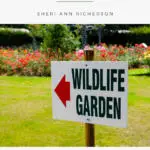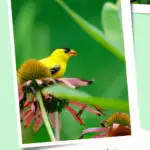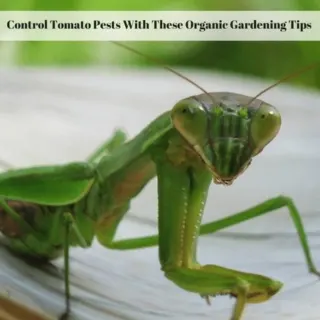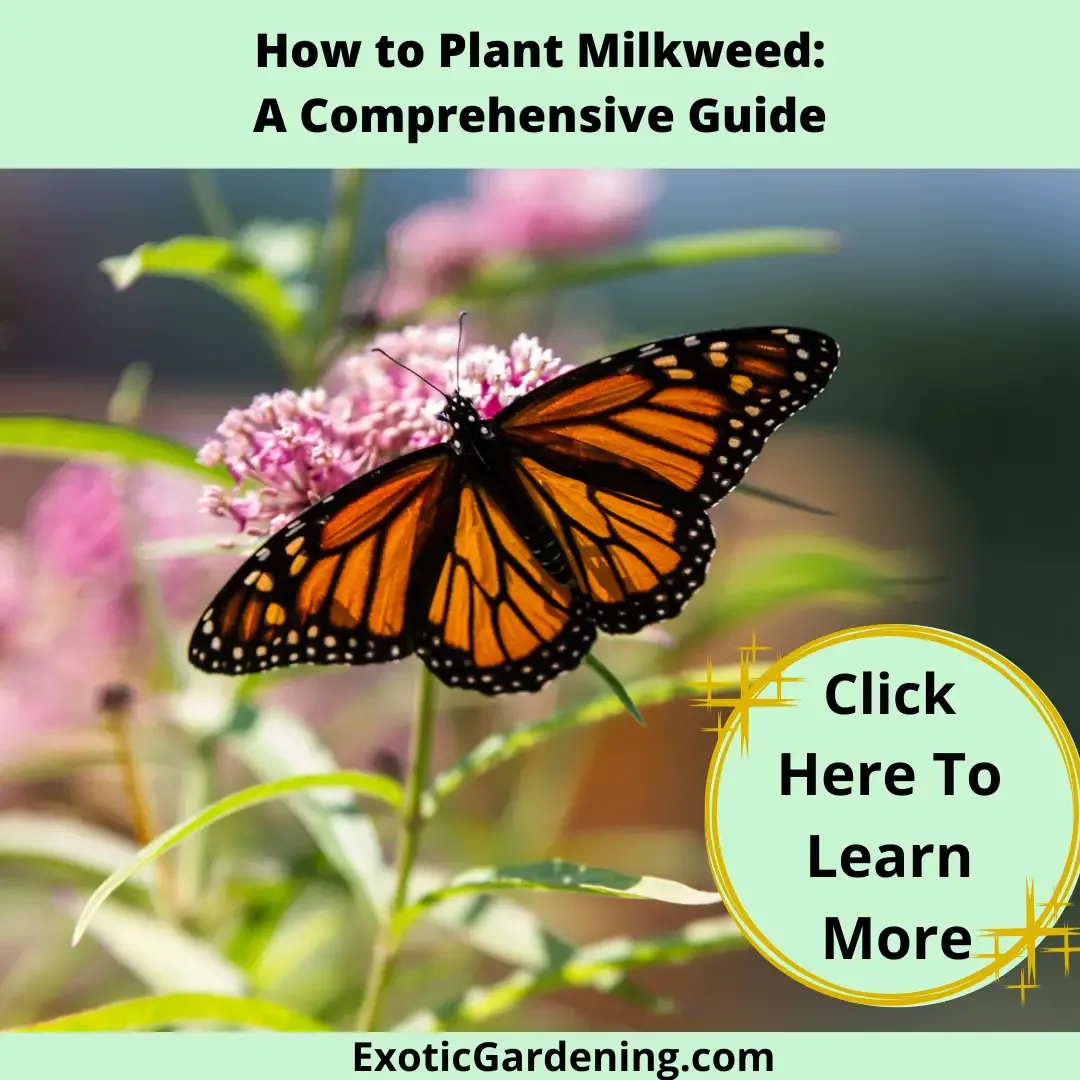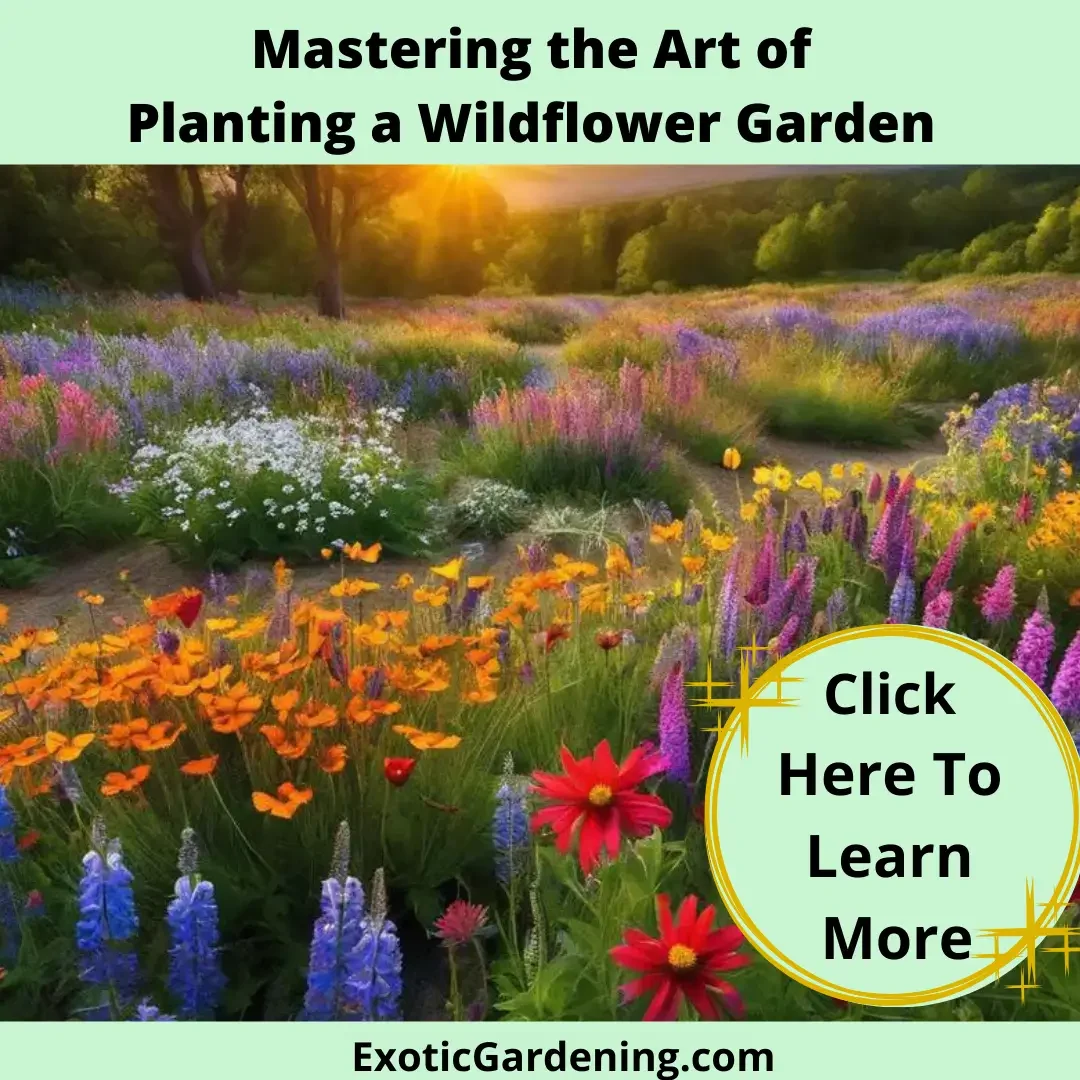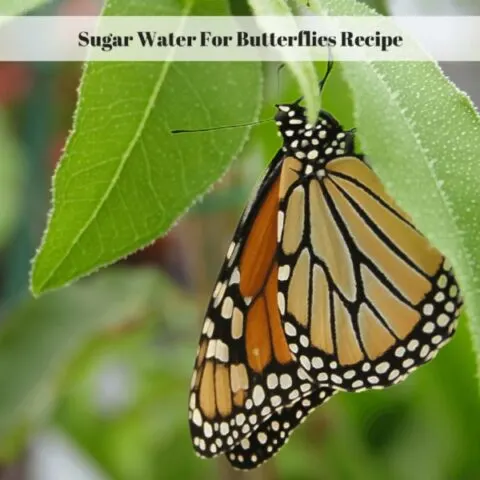A great way to support wildlife in your garden is to certify your yard as a Wildlife Habitat through the National Wildlife Federation.
This is something we did years ago when we first bought our farm because we felt it was so important for wildlife to have a place to nest, rest and find a source of food.
While it is true that the wildlife we focus on is mainly birds, frogs, pollinating insects and of course butterflies, over the years we have seen a number of wild animals pass through or create nests on the property.
Some wildlife can be destructive, so sometimes they do have to be relocated, but we try to let them live their life in peace because frankly they are an important part of the ecosystem.
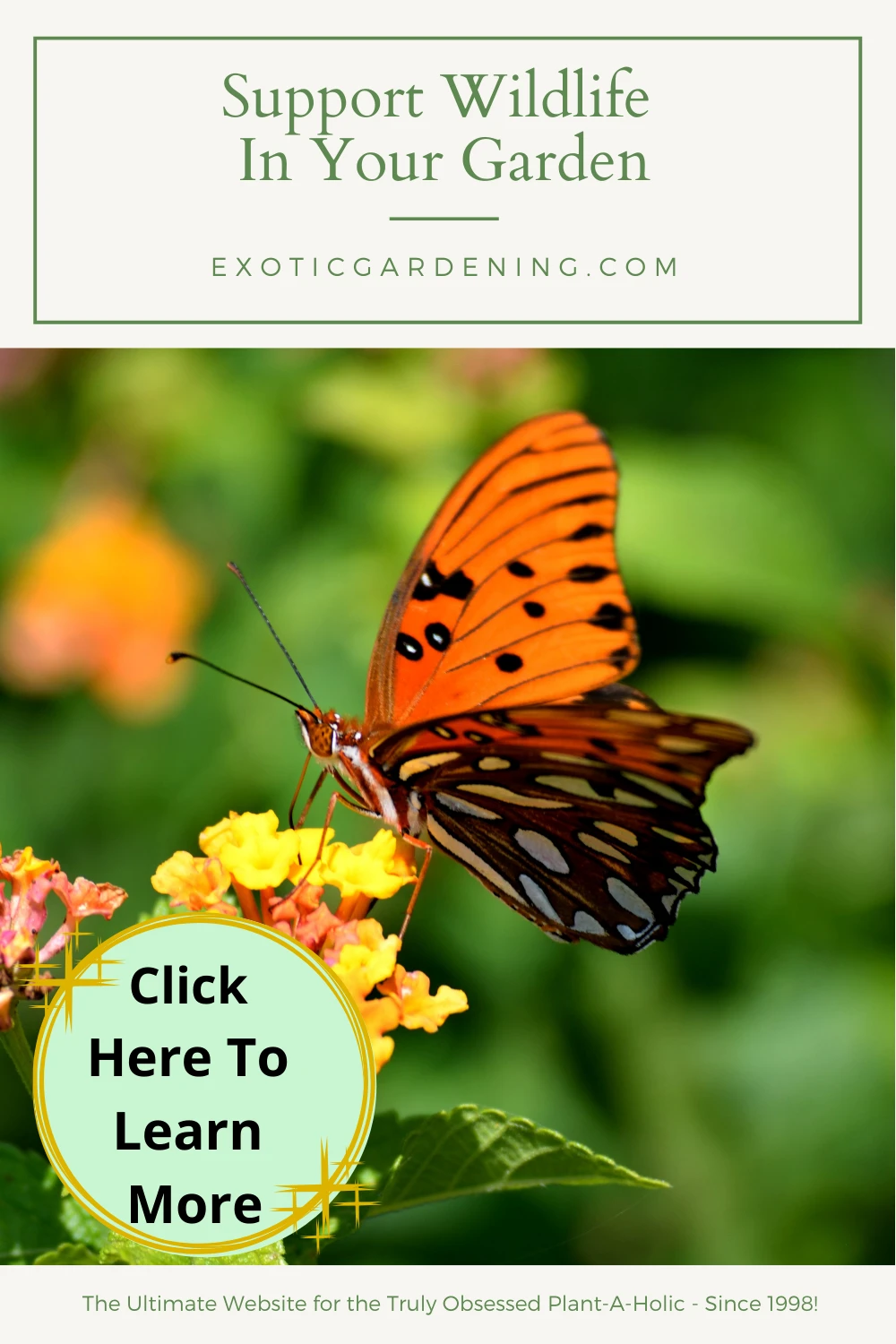
How To Support Wildlife In Your Garden
It is not difficult to support wildlife in your garden.
In fact, if you feed the birds, put up bird houses or plant a pollinator garden, it is something you are already doing.
In order to thrive, wild animals and polliantors need a source of water and food – which could be nectar or even seeds and a safe, dry place to live.
This place is likely also where they will birth and raise their young.
So, the first step is to consider where you might want these locations to be in relationship to your home.
While you do want to be able to enjoy the wildlife that lives on your property, I do not recommend providing housing that is close to your home or even close to where you are raising outside animals for safety reasons.
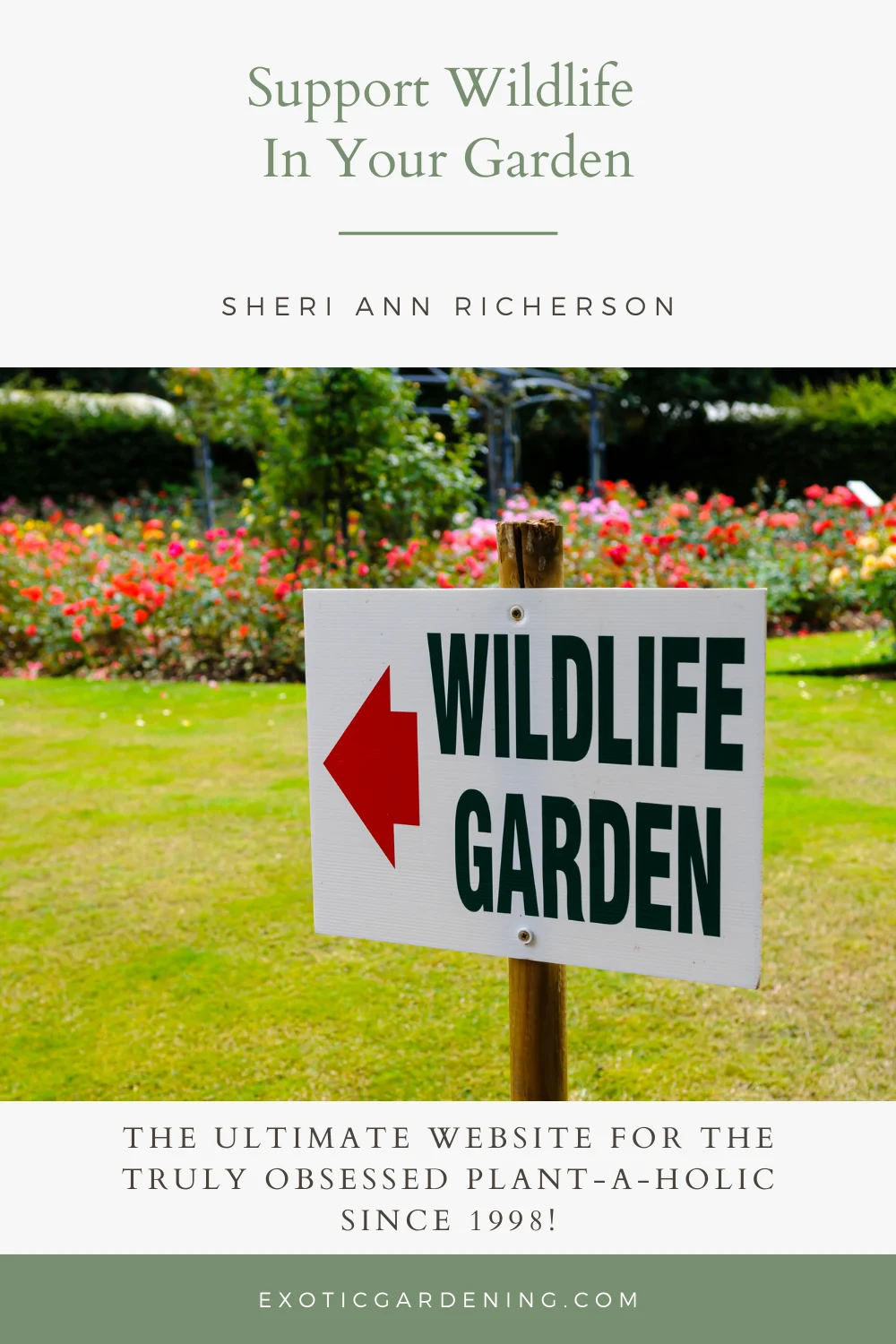
Creating Shelter For Wildlife In Your Garden
Birdhouses are of course on thing – but a log pile for snakes is an entirely different thing.
So think about the type of wildlife you want to welcome into your garden.
Then think about where the best place in your yard to create a shelter they will use is going to be.
For example if you truly wish to create a place for snakes, somewhere near water, far from your house where they won’t be disturbed is going to be the best option.
If your goal is to welcome birds into your garden, then place the birdhouses close enough to your home that you can watch them as they enter and leave their new home.
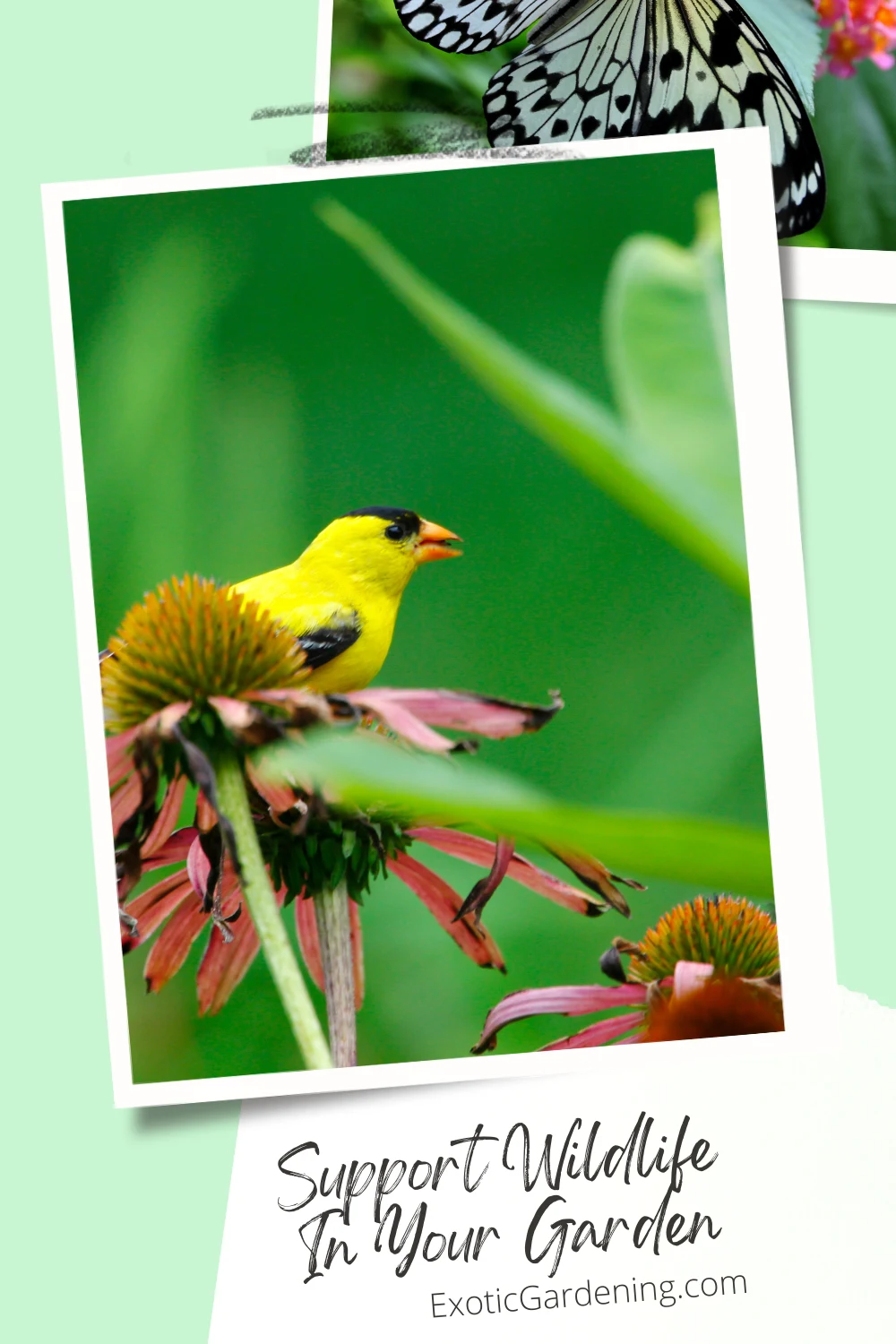
Support Wildlife In Your Garden By Providing A Water And Food Source
Food and water are absolutely necessary if you are going to support wildlife in your garden.
If you are lucky enough to have a natural water source, such as a creek, go ahead and use it.
If not, birdbaths or a shallow plant saucer with a few rocks in it that protrude above the water line work well.
As for food, you can choose to purchase sunflower seeds or other items the wildlife will eat or you can plant shrubs or flowers that provides food for them.
You can also hang feeders, such as hummingbird feeders.
While some types of wildlife prefer nectar while others prefer seeds, berries or even the insects the plants attract.
Again, it is important to know what type of wildlife you want to invite into your garden, then do the research to find out what you need to provide for them.
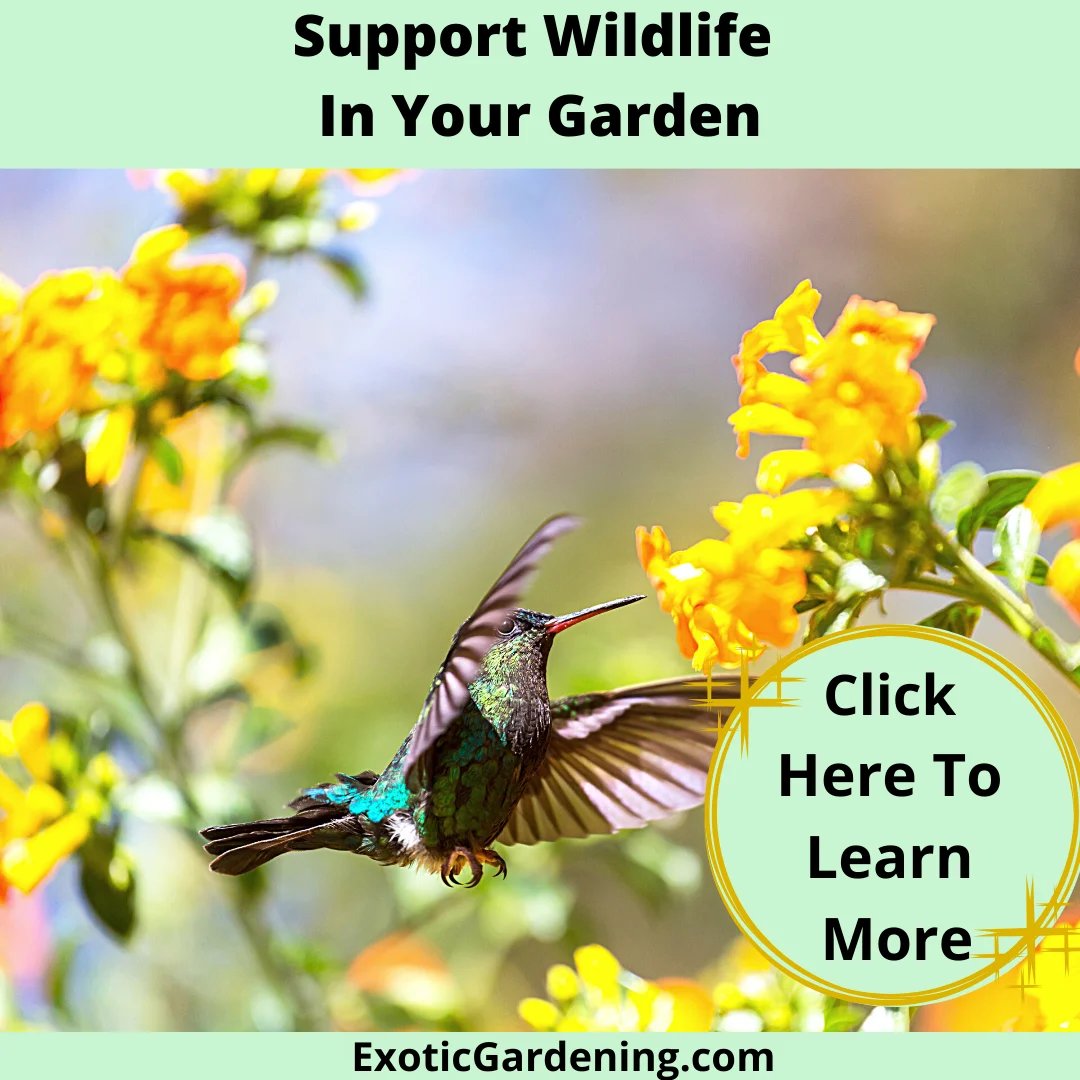
Celebrate National Wildlife Week
National Wildlife Week celebrate’s wildlife, but of course the hope is to inspire people to take action to protect America’s wildlife and wild spaces!
Over the course of the week, National Widlife Federation (NWF) and its partners will highlight this connection by exploring the importance of wildlife conservation.
For example, one year NWF shed light on the connection between wildlife and water by examining over 40 different featured species across the country, from the endangered Hawaiian monk seal to swamp rabbits, whooping cranes and loons, spring peepers to spotted salamanders, rainbow trout to walleye and blue crab to dragonflies.
An easy way to get involved is by adding an activity or lesson each day to do at home, school or with a youth group in your community.
Host an event highlighting wildlife, such as learning to fish, taking a hike along a waterway, or even planting trees to help clean our water and provide habitat for wildlife.
You can even join in a social media campaign to get students and adults aware about wildlife.
In fact, NWF has all kinds of information available including an email listNWF has all kinds of information available including an email list.
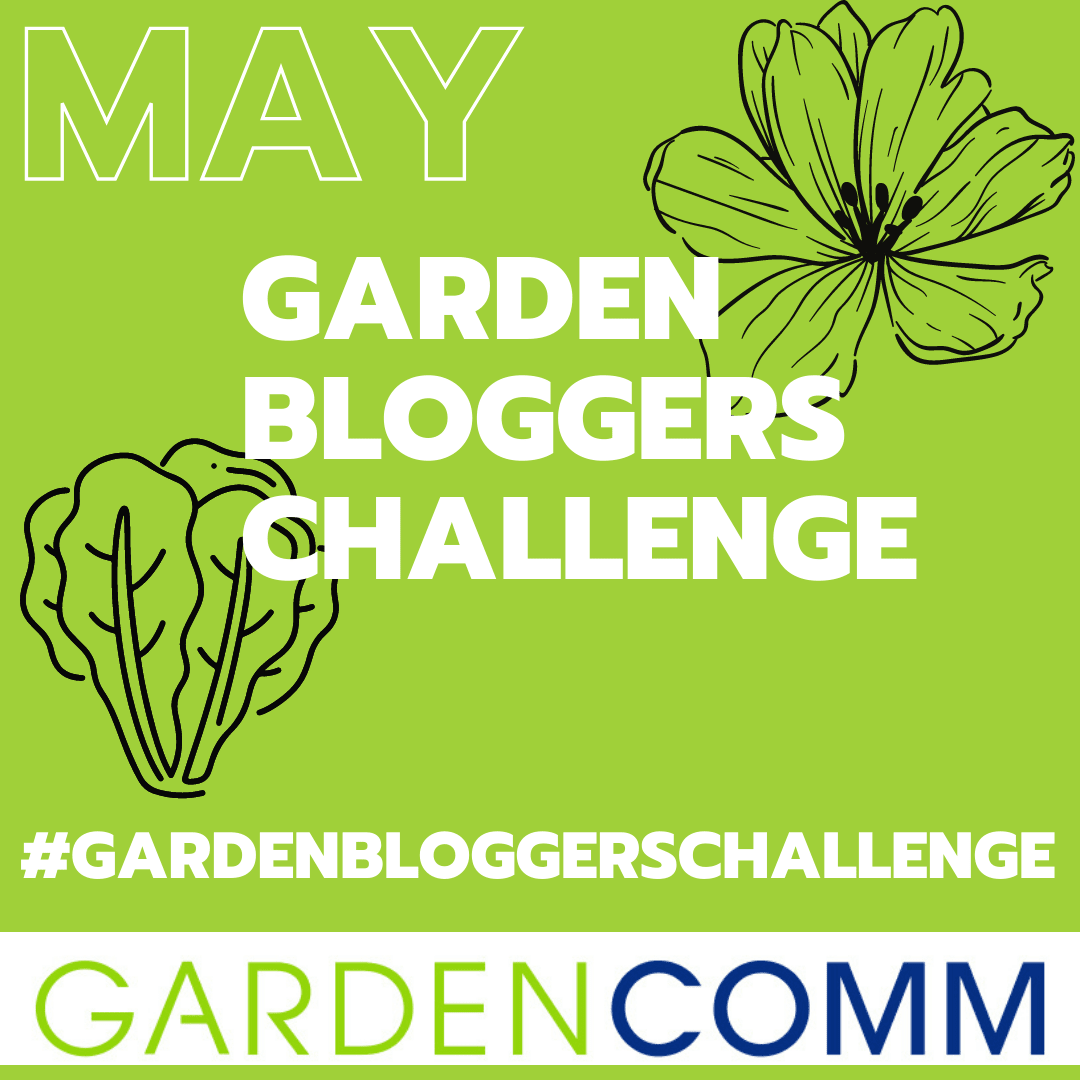
This post is part of the #GardenBloggersChallenge sponsored by Gardencomm for the month of May. You are invited to join in and can see more details at gardencomm.org
Support Wildlife In Your Garden
How to Plant Milkweed: A Comprehensive Guide
Discover a world of milkweed gardening: Sow Right Seeds, Burpee, Lowe's, and Amazon—your complete guide awaits!
Cultivating Biodiversity In Your Garden: Plants That Give Back
Discover the art of cultivating biodiversity in your garden with our expert tips on choosing plants that enrich your ecosystem.
Mastering the Art of Planting a Wildflower Garden
Discover the art of planting a wildflower garden with our step-by-step guide. Bring nature's beauty to your backyard today!

